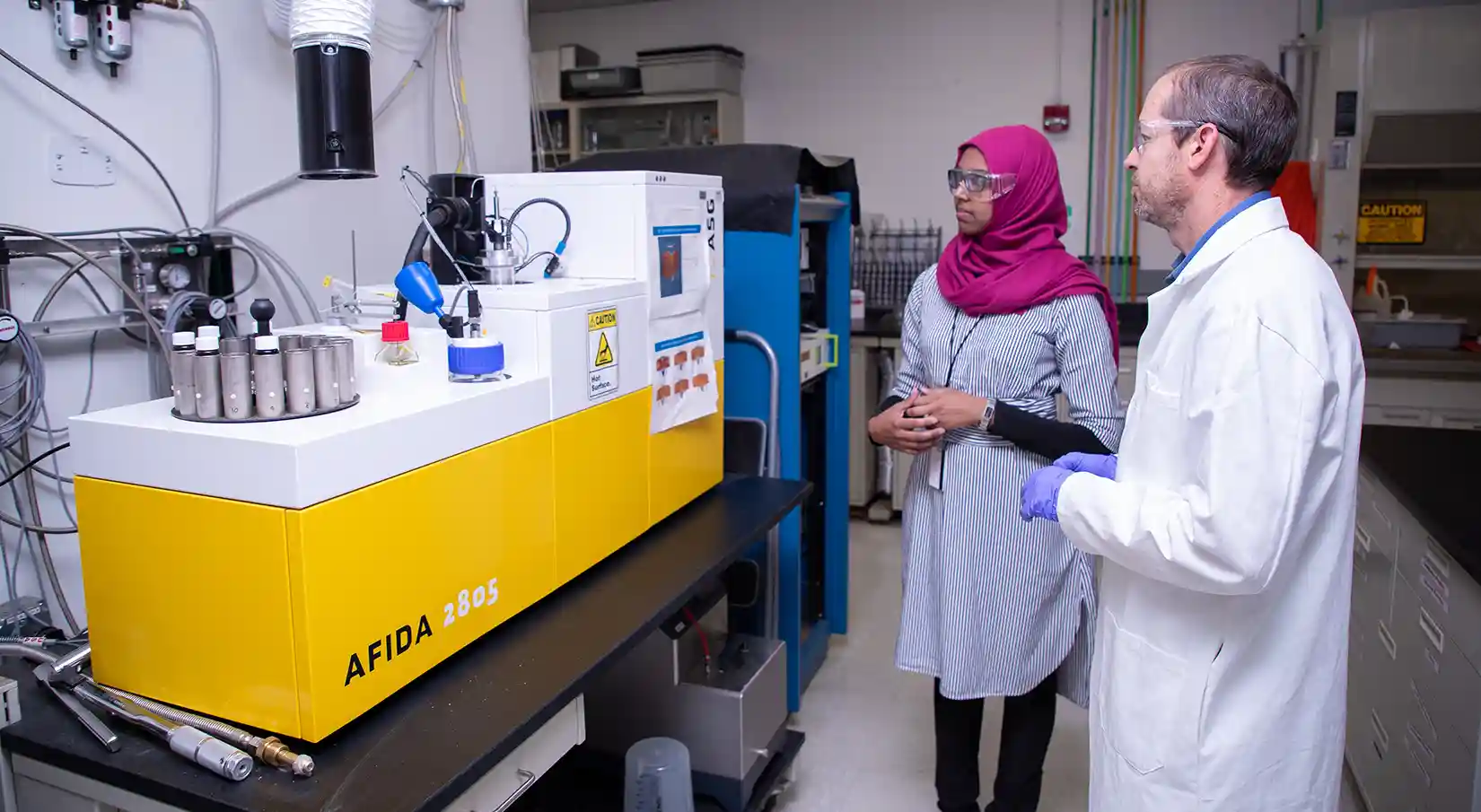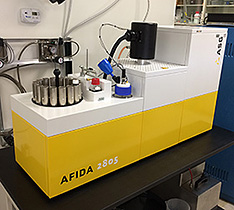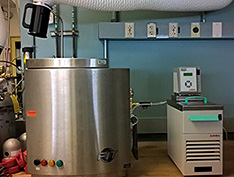Fuel Combustion Laboratory
NREL's Fuel Combustion Laboratory focuses on characterizing fuels at the molecular level. This information can then be used to understand and predict a fuel's effect on engine performance and emissions. By understanding the effects of fuel chemistry on ignition, as well as the potential emissions impacts, we can develop fuels that enable more efficient engine designs, using both today's technology and future advanced combustion concepts.

This lab supports the Renewable Fuels and Lubricants Laboratory and NREL's fuels performance R&D.

Advanced Fuel Ignition Delay Analyzer
The research-grade Advanced Fuel Ignition Delay Analyzer (AFIDA), a constant-volume combustion chamber platform for fuel ignition kinetics research, was acquired to expand the lab's capabilities in screening small quantities of fuel compound candidates. This equipment significantly increases the range of experimental conditions and throughput to map ignition delay of novel fuel compounds and blends. The AFIDA offers greater experimental flexibility compared to NREL's Ignition Quality Tester (IQT) platform; a high-pressure (1,200- bar) direct-injection system to minimize spray physics effects; and an autosampler carousel to enable automatic operation for experiments with various fuels, pressures, and temperatures.
Fuel Ignition Tester

The Fuel Ignition Tester (FIT) adds another constant-volume combustion-chamber platform for fuel ignition kinetics research. The FIT furthers the development of novel fuel ignition experimental techniques that complement existing engine-based methods while providing more insight into fuel blend ignition behavior. In addition to the increased capacity for standard American Society for Testing and Materials (ASTM) fuel ignition measurements, the FIT will be modified for gaseous dual-fuel ignition studies, including natural gas and propane.
Ignition Quality Tester
The central piece of equipment in the Fuel Combustion Laboratory is the Ignition Quality Tester (IQT). The IQT is a constant volume combustion vessel that is used to study ignition properties of liquid fuels. In addition to the main combustion unit, the IQT includes temperature controllers and other electronics and a closed-loop cooling system.
The constant volume combustion chamber is designed so that fuel contact with the walls is minimal. Nine cartridge heaters controlled to maintain a constant chamber temperature surround the combustion chamber. A high-speed pressure transducer measures chamber pressure to detect fuel ignition. Air-actuated intake and exhaust valves are used to feed fresh charge air and to vent combustion product gases. Fuel samples are injected into the combustion chamber through a pintle-type injector nozzle.
The Ignition Quality Tester is interfaced with a computer that allows the user to set temperature and pressure conditions as well as to process the experimental data. A typical experiment consists of 47 separate injections15 pre-injections to reach steady-state temperatures and 32 measurements of the actual ignition delay. The ignition delay is determined as the time difference between when the injector opens and where the pressure begins to increase.
Unregulated Emissions Measurement
The Fuel Combustion Laboratory houses the following equipment for measuring toxic unregulated exhaust emissions:
- A gas chromatograph allows for the speciation and quantification of C1-C12 hydrocarbon emissions including 1,3-butadiene and benzeneboth carcinogens being considered by California for future regulations.
- Passivated Summa canisters collect gaseous exhaust samples. The canisters are cleaned and evacuated prior to use.
- A pre-concentrator enables detection of compounds at sub-parts per billion by volume levels.
- A high-performance liquid chromatograph (HPLC) quantifies emissions of aldehyde and ketone, which are known to be pulmonary irritants. These carbonyl emissions are collected on 2,4-dinitrophenylhydrazine adsorbent cartridges and eluted with acetonitrile for analysis via HPLC.
Share
Last Updated June 27, 2025
